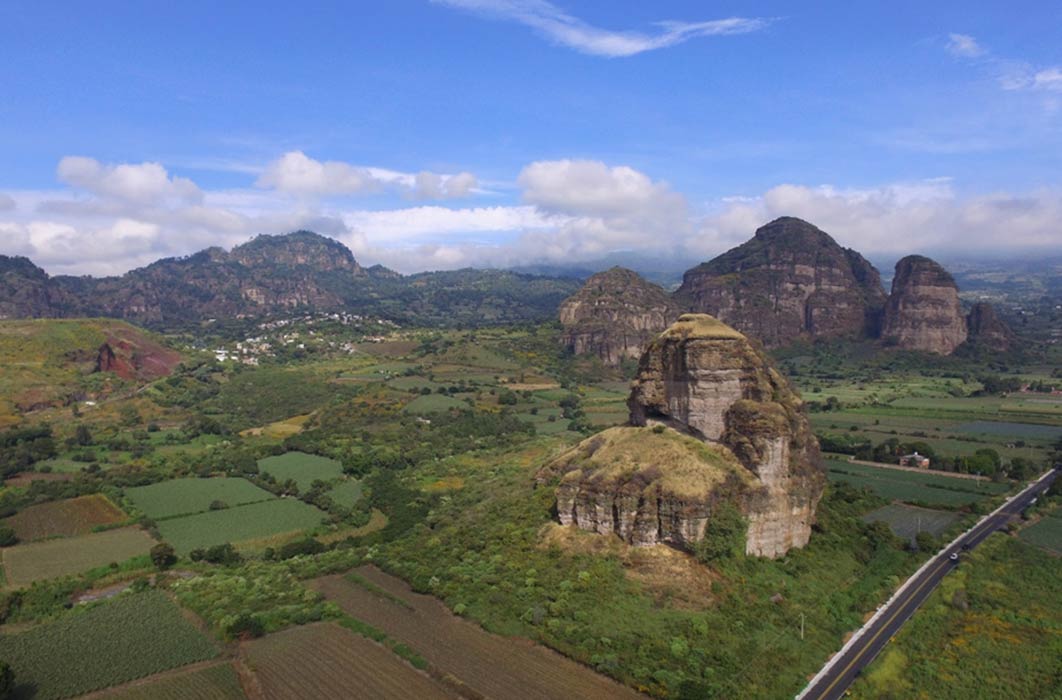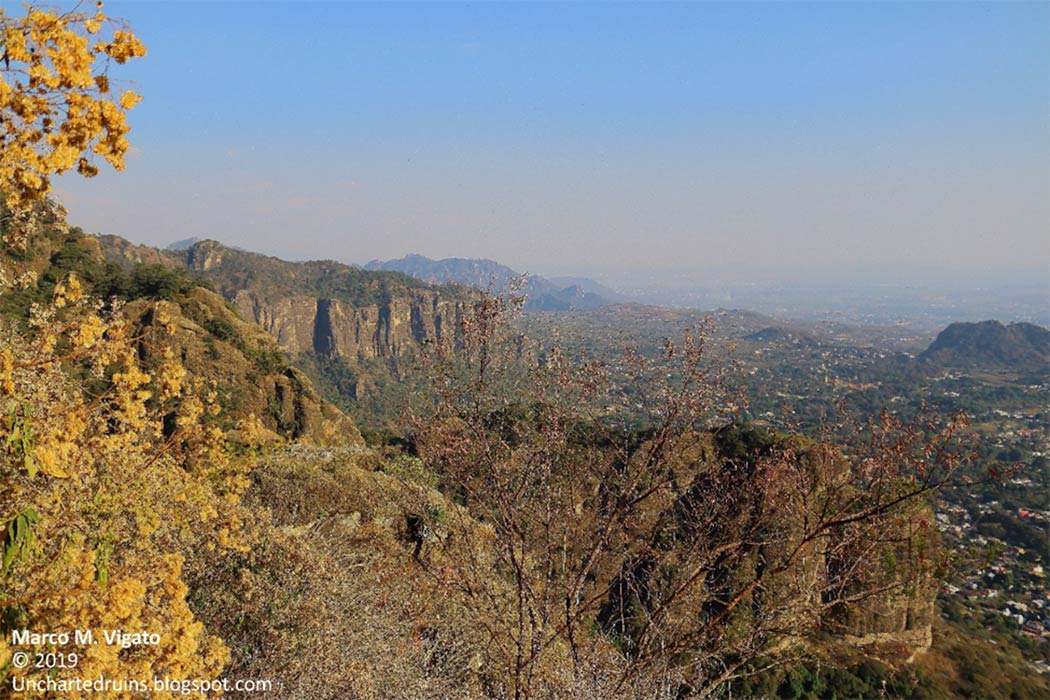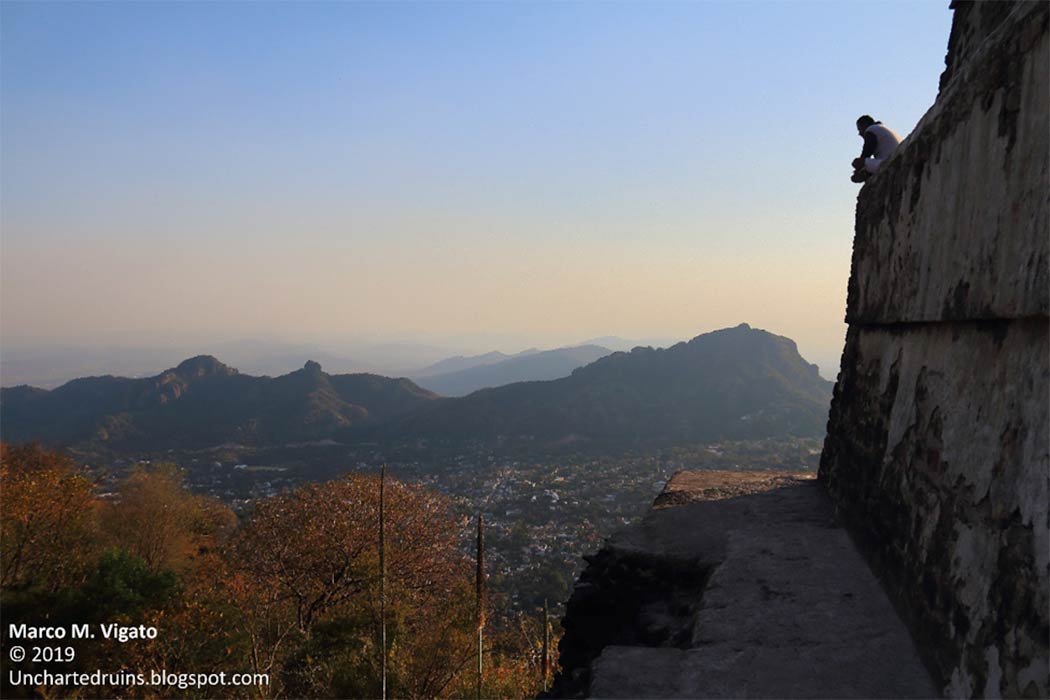
Atlantean Temples of Mexico: The Sacred Valley Of Tepoztlàn
Nestled in a sacred valley, at an altitude of about 1,700 meters (5,560 feet) above sea level, to the south of Mexico City, lies the town of Tepoztlán. The surrounding landscape has been shaped by millions of years of volcanic eruptions and erosion. Due to its unusually mild climate and the presence of many caves in the mountains, the area around Tepoztlán has been continuously inhabited for at least the past 10,000 years. The Aztecs held it sacred and built a temple there in homage to its eponymous deity Tepoztecatl. In more recent years, Tepoztlán has become associated with a large number of UFO sightings and other unexplained phenomena, which keep adding to the mystery of the place.

The Town of Tepoztlán and the sacred valley. (Image: © Marco Vigato)
During the 1970’s, Tepoztlán was visited by the Peruvian researcher Daniel Ruzo, discoverer of Marcahuasi, who was drawn to the area by the presence of curious rock formations that he believed were the legacy of a lost civilization once spanning the entire Globe. Ruzo spent the last years of his life in Tepoztlán, exploring and documenting its mysterious mountains and the giant figures carved into their rocks, until the time of his death in 1991.
Daniel Ruzo’s Extraordinary Discoveries
The name of Daniel Ruzo was made famous by his discovery of Marcahuasi and its hundreds of mysterious rock sculptures in the Andes of Peru. Born in Lima in 1900, Ruzo conducted his first expedition to the Meseta of Marcahuasi in 1952, after being shown by the explorer Kuroki Riva pictures of what appeared to be colossal, albeit very eroded, rock sculptures. Ruzo published his first report on the sculptures of Marcahuasi in 1954. He became convinced that a mysterious culture had been responsible for carving entire mountains and valleys in a symbolic fashion thousands of years ago. He called this culture Masma, after a dream related to him by his friend and explorer Pedro Astete, who described a procession of figures dressed in white robes descending into an underground temple containing the complete records of the lost civilization on thousands of tablets and scrolls. Ruzo considered the Masma to be the true mother civilization of humanity, which perished in a great Flood over 10,000 years ago. Over the following decades, Ruzo would spend countless years and resources in search of more evidence of the Masma culture and its prehistoric temples. He finally become convinced that the entrances to the subterranean world that Astete had only glimpsed in his dreams years before could be found not only in Peru, but also in other parts of the world marked by the presence of giant rock sculptures acting as guardians to the sacred treasure.
- Unravelling the Mystery of The Marcahuasi Ruins and Their Connection with Egypt
- The Megalithic Temple of Malinalco: Could these Magnificent and Complex Rock-Cut Structures Actually Pre-Date the Aztecs?
- Tamoanchan – In Search of the Lost Cradle of Mesoamerican Civilizations
His research took Ruzo to various parts of Peru, France (Fontainebleau), Giza and Montserrat. Finally, he landed in the mountains of central Mexico, near the city of Cuernavaca, where he had the first glimpse of the sacred valley of Tepoztlán from the highway connecting the town to Mexico City.

View from the summit of the Pyramid of Tepozteco, looking towards the town of Tepoztlán and the Chalchitépetl in the background. (Image: © Marco Vigato)
The Atlantean Temples Of Mexico
Seen from a distance, Tepoztlán appears surrounded by an amphitheater of mountains, dominated in the center by the huge pyramidal mass of the Chalchitepetl, (the Mountain of Treasures), from where it is possible to catch glimpses of the snowy summits of the Popocatepetl and Iztaccíhuatl volcanoes. What is more, the mountains around Tepoztlán appeared to have been deliberately carved and shaped to represent colossal human and animal figures. Ruzo spent the following years in Tepoztlán documenting its mysterious rock formations through hundreds of pictures taken from different angles and in different light conditions based on the time of the day and the year. The result of nearly 10 years of research was his 1976 book El Valle Sagrado de Tepoztlán: Los Templos Atlantes de México (The Sacred Valley of Tepoztlán: The Atlantean Temples of Mexico). The book was, in the author’s own words: “the first affirmation of the true ancient past of Mexico”. It contained a description of the symbolism embedded in the mountains and rock sculptures of Tepoztlán, which Ruzo considered to be one of the earliest and greatest temples of the Mother Culture of humanity. “In 8,500 years”, he wrote, “humanity has not realized anything that could even remotely compare to Marcahuasi, in Peru, and to the three sculptured mountains of Tepoztlán”.





